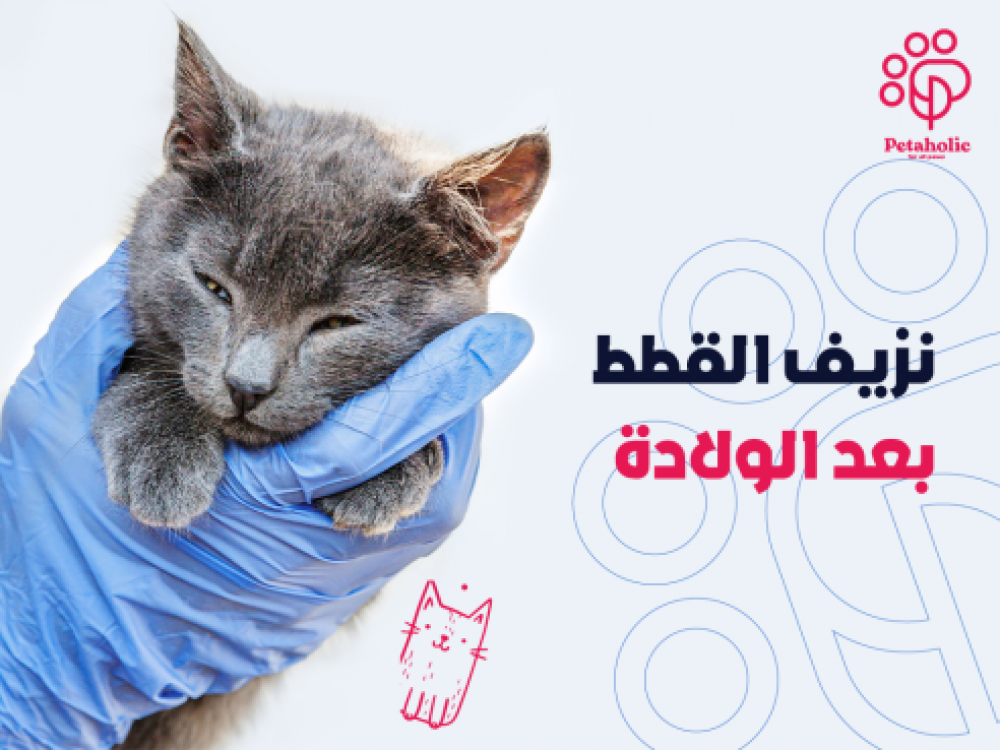
Many are interested in caring for a cat during her pregnancy, what to do during childbirth, and how to take care of newborn kittens. However, what happens to the mother after childbirth is ignored, but this is completely wrong. It is important as guardians to ensure that the postpartum period in cats is as safe as possible, as any complications should be looked for and any problems detected and treated early. At Petaholic, we discuss whether postpartum bleeding in cats is normal or if something is wrong. We have also provided you with all the supplies that a mother and her young need.
Is cat bleeding after childbirth common and normal?
To answer this question, you must first understand the birthing process and how a cat gives birth normally. A cat's pregnancy lasts approximately 60 days. After this time, the cat will give birth to kittens. Generally, this happens during the night. The cat is looking for a quiet place to feel safe, warm and comfortable. She also usually gives birth without any assistance, preferring the safety of solitude. It is also normal for a cat to stop eating before giving birth.
When the first kitten is born, it is born inside a membranous sac known as the amniotic sac. The mother tears this sac with her teeth and cuts the umbilical cord. She will then lick the kittens clean to remove any secretions. Each kitten should only have a few minutes between birth and the process of bag tearing and cleaning is repeated until all the kittens are born. So it is normal to see a little blood in the secretions. However, this does not mean that the mother is actively bleeding. Various complications may occur during the birth of a cat. This may have something to do with both physical problems and mental stress if the cat is not in a good position to give birth.
Among the featured products that we recommend for your mother cat and her babies at Petaholic:
How do you know if a cat has finished giving birth?
If the cat has had x-rays, your vet can tell you how many kittens you can expect. By their number, you will be able to find out when the birth has ended. In cases where we do not know how many kittens to expect, we can look for the normal behavior of the mother after giving birth. They are likely to remain calm and relaxed, allowing babies to start feeding after they are appropriately brushed. Meanwhile, postpartum bleeding in kittens may occur naturally.
However, there are some signs that a cat may not have had all of her kittens. If you see the cat making thrusting motions, it means that it is trying to give birth to another kitten, but if this happens without any kittens being born, this may be a sign that something is wrong. The kitten may be stuck or there may be some tearing in the tissue. In either case, bleeding may occur.
If you notice that your cat is passing either green or bloody discharge through the vulva, you need to go to the vet immediately. This should not be confused with placental discharge. The placenta will be a mass of tissue, somewhat like a full organ. The mother cat must eat the placenta to get more nutrients. While there may be some blood on the placenta, it should not be an abnormal amount.
Some of the products we recommend for your young cat at Petaholic are:
Postpartum stage and how is the psyche of cats immediately after birth?
After the mother cat gives birth, she will devote herself to caring for her kittens. The little ones will need to be fed, brushed and warmed. The latter is especially important because newborn kittens are unable to regulate their body heat. Newborn kittens also cannot urinate and defecate on their own. So the mother stimulates her genital and anal areas with her tongue to help her urinate.
A mother cat will spend almost all of her time with her kittens, usually just going to the toilet and eating and drinking. This does not mean that your cat is sad or depressed at all, it just instinctively cares for her babies. As the kittens begin to grow, they will gain more independence and the mother will often leave them on their own, while watching them.
If you want the best care for growing kittens, we recommend:
How do you know if postpartum bleeding is normal or a sign of danger?
The kitten will give birth on its own, smoothly, without any intervention from you. However, some complications may occur during childbirth which may cause some anxiety. Here are some symptoms you should watch out for:
- More than 24 hours have gone by without the cat eating, drinking, or urinating.
- If she shows signs of fever or hypothermia.
- If the cat is still in labour, but hasn't given birth to any kittens for more than an hour.
- Mucous membranes are not pink.
- The presence of vomiting and / or diarrhea.
The secretions that pass through the vulva continue long after all the kittens have been born. In terms of postpartum bleeding, there is a normal amount of blood. This will be a little around the vulva, and a little bit of blood may pass when each kitten is born. The expulsion of the placenta may also be accompanied by a little blood. However, the blood itself should be normal in colour, and may be accompanied by a little watery fluid that may have some green or yellow colour. But if you see pus or other sticky green colored substance, it may be a cause for concern.
From our special collection for cat moms and their kittens, we recommend:
What are the problems of cats after childbirth that cause bleeding?
Abnormal bleeding can be caused by various factors, but the most common problems that cause bleeding are:
placenta retention
Sometimes, the placenta does not come out of the mother cat after the birth is complete. When this happens, the membranes in her uterus will begin to break down and rot, causing the mother to experience turmoil and abdominal discomfort. She will also not want to breastfeed, lie down or look after her babies, and may eat very little or refuse food and water and develop brown vaginal discharge. In this case, the cat will need immediate veterinary care.
Endometriosis is one of the causes of postpartum bleeding in cats
This inflammation usually occurs within 3 days of delivery. Signs of infection include fever, ignoring her children, refusal to eat, and inactivity. You may also vomit and drink more water than usual. There will be dark red, foul-smelling bleeding, as well as a clear, black discharge from the vagina.
There may also be other common causes of postpartum hemorrhage that need immediate veterinary care, namely:
- internal bleeding
- Uterine rupture
- fluid buildup
- placental abruption
Sometimes the problem is that the mother is unable to make the uterine contractions needed to deliver the kittens.
We recommend Petaholic for your kitten:
- Kit Cat canned puree for small cats with tuna 80g
At Petaholic, you can buy all the supplies needed to take care of your cat and her newborn kittens at the best prices in the kingdom.
We also have:

